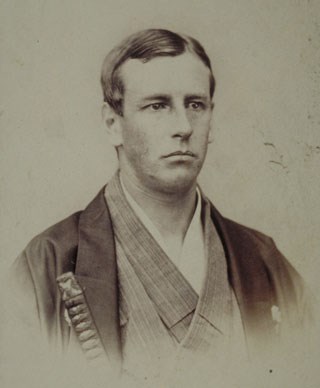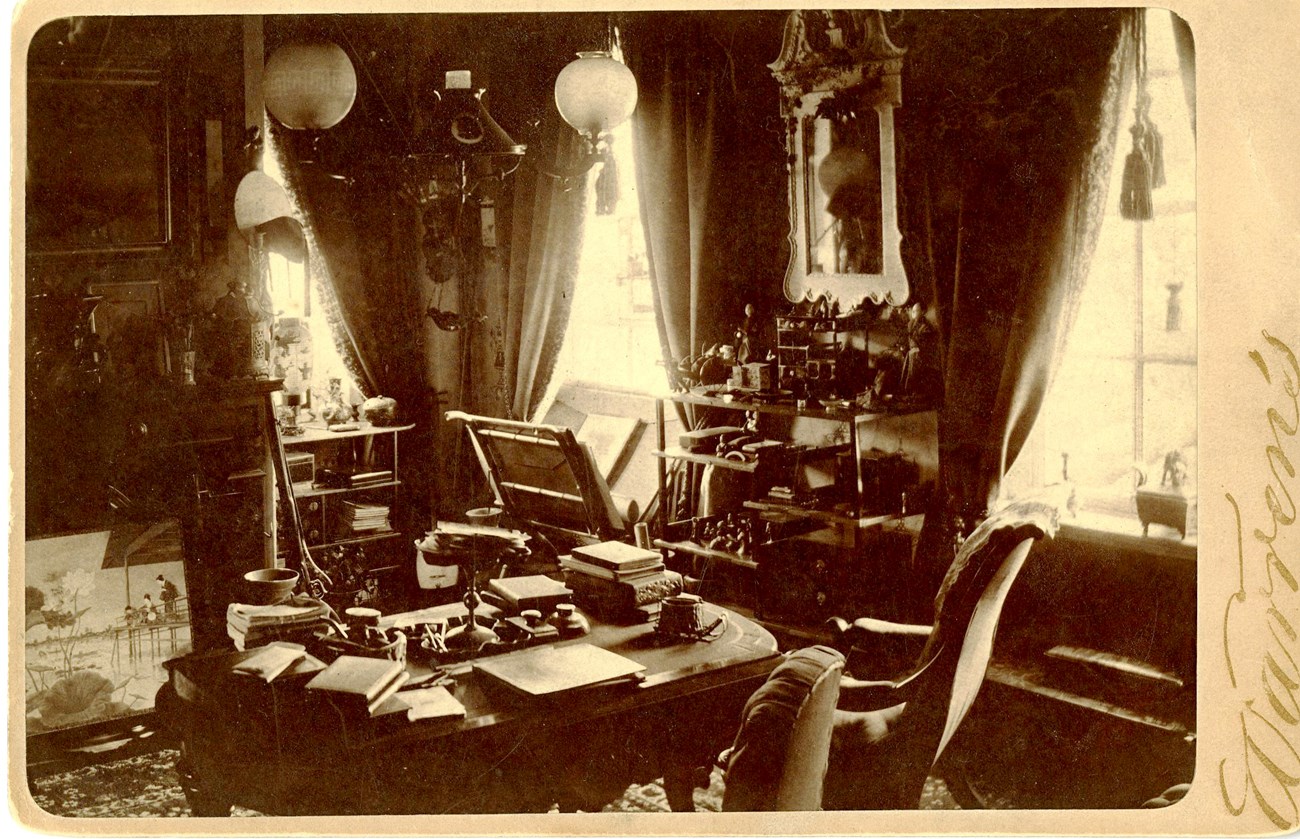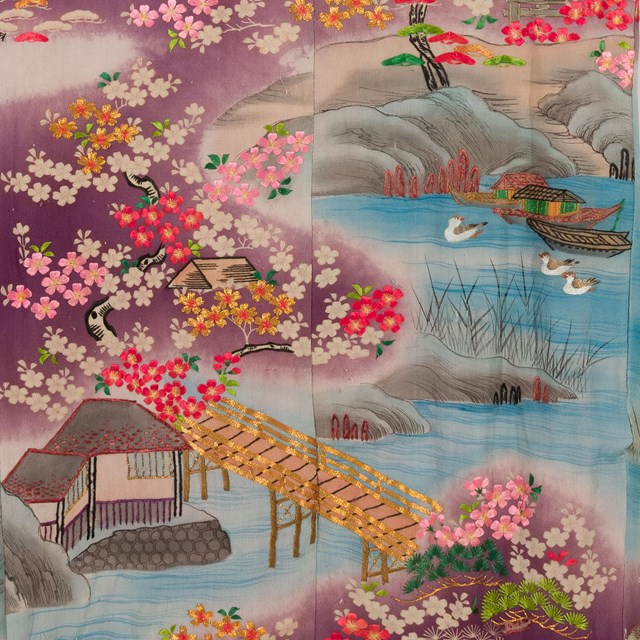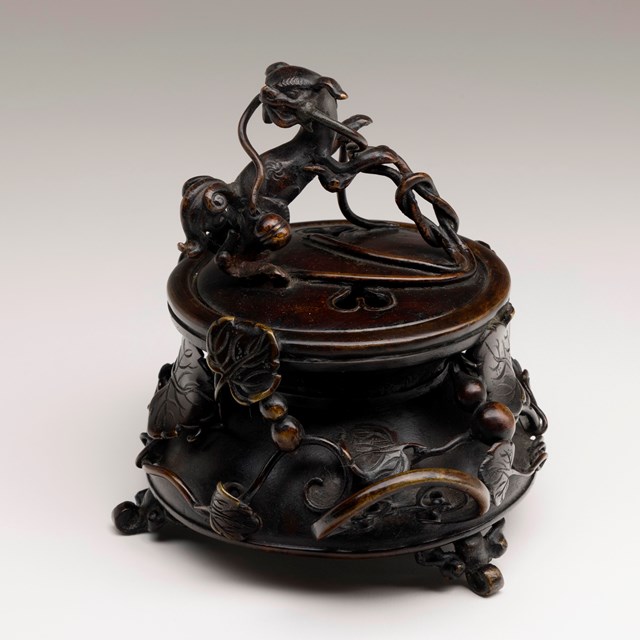Last updated: June 8, 2023
Article
“Thoroughly Japanese”: Charley Longfellow’s Collection

Charles Appleton Longfellow Papers (1008.2/1.1-2#70)
Japan captured the imagination of world traveler Charles Longfellow like nowhere else. He arrived in June 1871 and stayed for 20 months, enjoying local culture and buying whatever caught his eye. Through timing, luck, and his famous name, Charley Longfellow had almost unprecedented access as a foreigner in Japan. He spent most of his 20 months in Yedo (Tokyo) and Yokohama, but also traveled through Ainu country in Yesso (Hokkaido), inland across Nippon (Honshū) Island, and to Kyoto, Kobe, Osaka, and Nagasaki. At every stop along the way, he collected “curios” and souvenirs.
Charley spent freely, pursuing objects he saw as authentic rather than focusing on high art. He wrote his collection contained “such lots of rubbish … but I am fond of them as being thoroughly Japanese.” In 1873 Charley warned his father, the poet Henry Longfellow, that he was sending home “eighteen large cases…. Where we shall stow them all when they arrive, I can’t imagine.” Charley’s collection left traces of Japan throughout this house, overflowing into storage rooms then and today.
His stay occurred as the Meiji government ended two centuries of Japanese isolationism. Though their policies benefited him, Charley mourned the drive to westernize Japan, writing “One sees so many splendid old things which will never be produced again… the new fashion being to have everything European.” Charley’s collecting placed him on the leading edge of the “Japan Craze” that swept the United States in the late 1800s.

LONG Buildings and Grounds Photograph Collection (3008/2.9-#3)
In 1874, Charley arranged his collection in his second-floor sitting room. The cluttered, crowded space combined Japanese decoration and western furniture, and was among the earliest American examples of a personal domestic space decorated in Japanese style. Longfellow’s collection was significant enough to attract the attention of William Sturgis Bigelow and Ernest Fenollosa, the founders of the Japanese collection at the Museum of Fine Arts, Boston, who viewed his room shortly after his death in 1893.
After Charley's death some of the collection was dispersed, but historic photographs and inventories identify many objects still in the museum collection at the Longfellow House.
Explore More
-
 Kimonos in the Longfellow Collection
Kimonos in the Longfellow CollectionThis virtual exhibit explores the kimonos collected by Charles Longfellow in Japan, and questions of cultural exchange and appropriation.
-
 Asian Collections
Asian CollectionsThe museum collections at Longfellow House include art and artifacts collected in or imported from Japan and China.
-
 Charles Longfellow's Japanese Albums
Charles Longfellow's Japanese AlbumsBrowse photograph albums collected by Charles Longfellow on the Longfellow House Digital Archive Portal.
